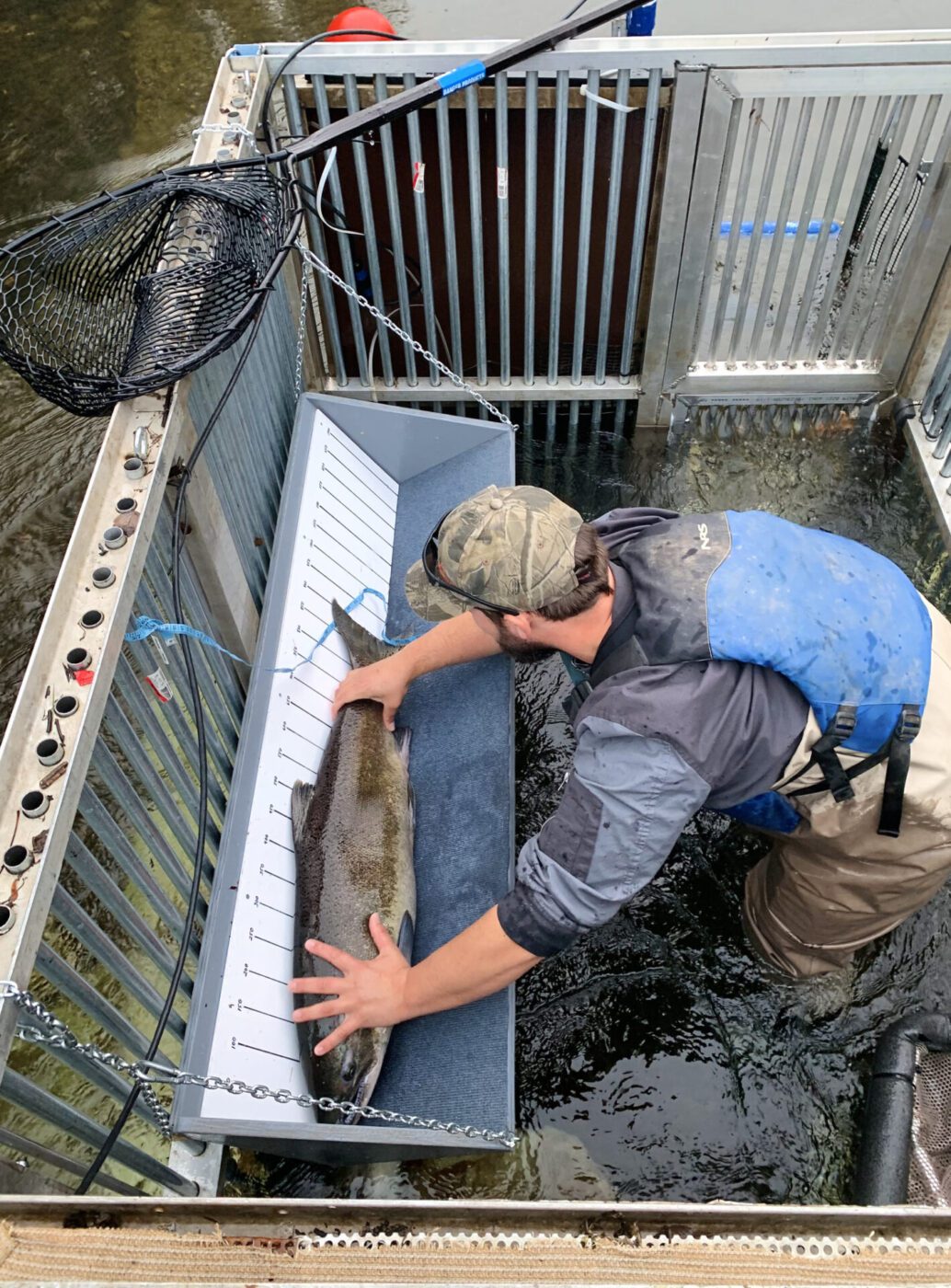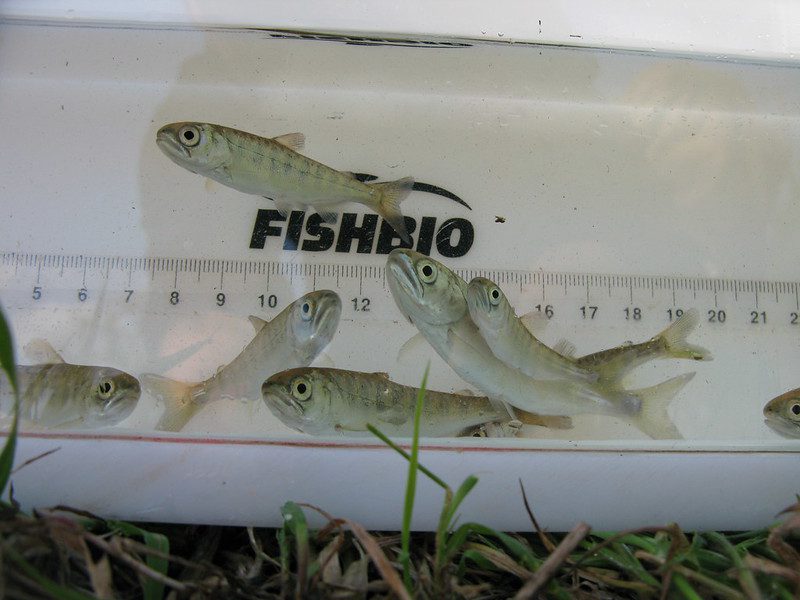Monday September 18, 2023

Chinook salmon (Onchorhynchus tshawytscha) is an incredibly valuable species, both ecologically and culturally. However, recent declines in Chinook populations throughout their native habitat in California have raised concerns about the future of these iconic fish. Biologists continue to study possible causes of this downturn, but few have taken life-history strategies into consideration. A “life-history strategy” describes the path an animal takes from birth to adulthood that maximizes their chance of survival and reproductive success. In California’s Central Valley alone, there are four distinct Chinook salmon runs that display different life-history strategies (fall-run, late-fall-run, spring-run, and Sacramento River winter-run), each named for the season they enter freshwater as adults to spawn. A study published in the spring of 2023 evaluated groups of Chinook with diverse juvenile and adult life-history strategies in the Pacific Northeast range, revealing the need for more localized management of these highly diverse salmon populations.

The researchers aimed to (1) determine how changes in escapement (the number of adults that return to spawn) and total run size (escapement + total harvest) impact Chinook life histories and regional groups, and (2) evaluate if certain groups or strategies are more resilient than others. To address these questions, the researchers compiled decades of Chinook population data ranging from the Fraser River in British Columbia to the Sacramento River in central California. They focused on three key factors, adult run-timing, the age at which juveniles reach the ocean, and migratory distribution after entering the ocean, which are all factors associated with life-history variation. They only used data from years when hatchery and wild-origin fish could be separated because hatchery fish often exhibit different traits. The researchers broke their analysis down into two parts; evaluating trends in escapement and trends in total run size. After narrowing down their dataset based on the parameters above, the researchers were left with escapement data for 79 populations and run size data for 23 populations. They then developed a model to better understand the changes in populations through time. Based on previous criteria, the researchers were able to use the model to quantify population changes in escapement for six regional groups (Salish Sea, Washington Coast, Columbia River, Oregon Coast, Rogue and Klamath Rivers, and Sacramento River) and changes in population run-size for four regional groups (Salish Sea, Columbia River, Washington and Oregon Coasts, and Klamath and Sacramento).
The results demonstrated that an overwhelming majority of the Chinook populations are declining. Escapement totals trended downward for 57 out of the 79 populations in the study, and in recent years several of these populations have had some of the lowest escapement levels on record. Total run sizes for 16 of the 23 populations also exhibited waning trends. However, the study did reveal wide variation in escapement trends based on location and life-history for each population. Early-migrating spring Chinook populations were more impacted by dwindling adult spawners than later-migrating fall Chinook. The time at which juveniles migrate out to the ocean also negatively impacted some populations in the study. Juvenile Chinook can be classified as “stream-type,” meaning they swim out to the ocean after one year, or “ocean-type,” meaning they migrate out during the first year. Early-migrating spring Chinook that are stream-type juveniles experienced greater declines than ocean-type juvenile populations. The most negative escapement trends identified for spring Chinook occurred in the Fraser, Columbia, and Snake Rivers, and most California populations. Some fall and later migrating populations in the interior Columbia and Fraser rivers did show increases in population size from the 1990s to 2019, but overall, the results suggested that most Chinook populations are declining.
Although these results may be discouraging, they also identify critical differences within Chinook salmon populations that can inform future fisheries management strategies. On the Pacific Coast, spring Chinook populations in particular experience the longest migration journeys, often through heavily altered watersheds. These watersheds have become increasingly dangerous for migrating salmon as water temperatures grow warmer. These conditions are detrimental to stream-type juvenile salmon that spend at least a year in freshwater streams before out-migrating. With this type of information in mind, fisheries managers can more effectively address each salmon population’s survival needs. A more local approach that focuses on the specific needs of diverse Chinook populations, like river connectivity and floodplain restoration, may be the answer to salmon recovery.
This post was featured in our weekly e-newsletter, the Fish Report. You can subscribe to the Fish Report here.
